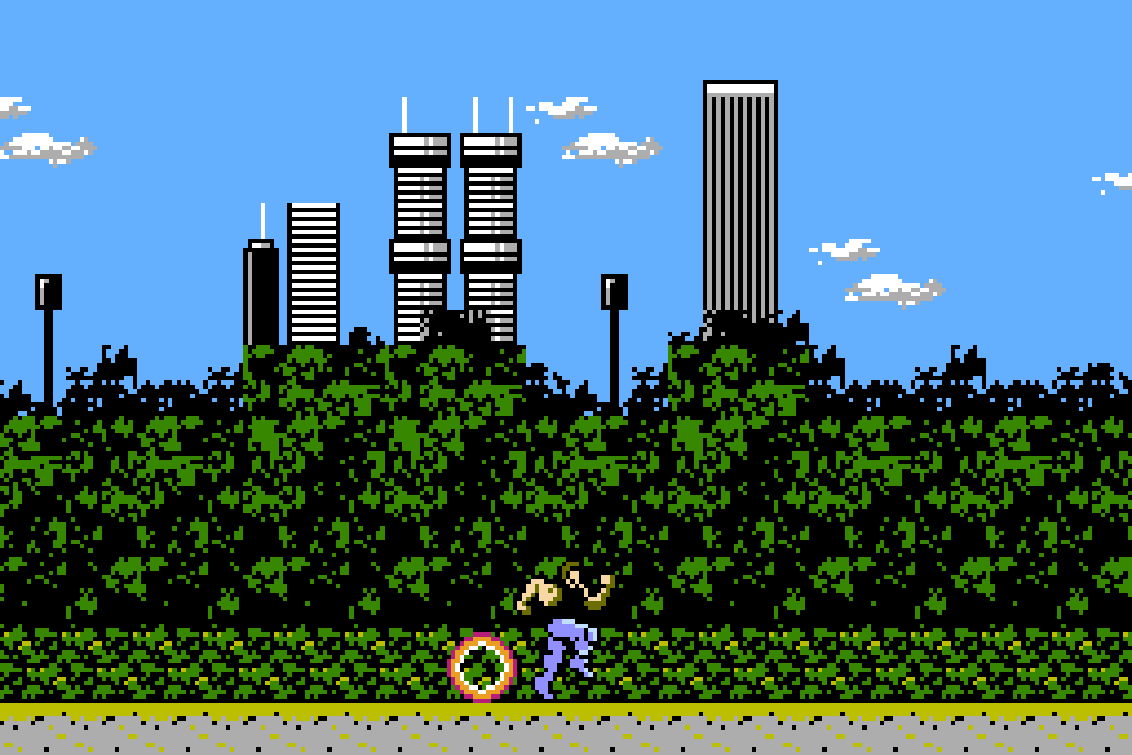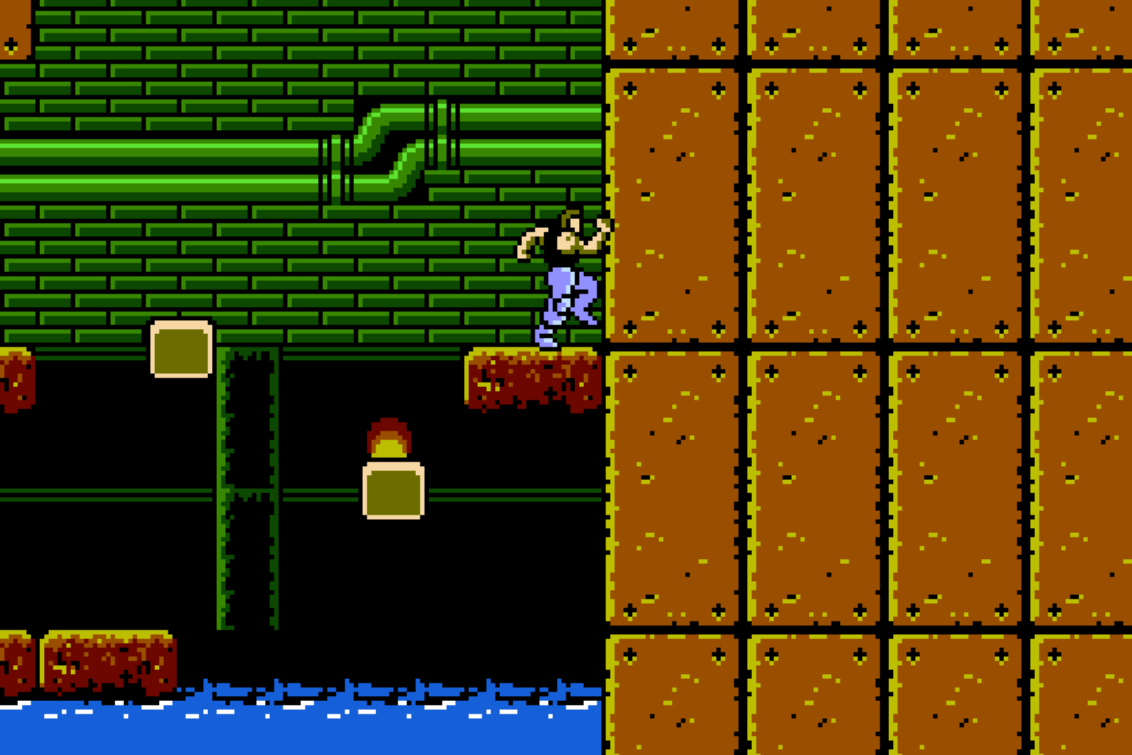Power blade
Power Blade: A Futuristic Action-Adventure
- Platform: SNES
- Developer: Taito
- Genre: Action, Platformer
Power Blade, developed by Taito and released in 1991 for the Nintendo Entertainment System, is an action-adventure title set in a dystopian future. With its blend of engaging mechanics, challenging levels, and distinctive aesthetic, Power Blade has earned a place among the memorable titles of the 8-bit era. Set in the year 2191, Power Blade transports players to a world where Earth's Master Computer, which controls all military and security systems, has been taken over by alien forces. The protagonist, Nova, is a government agent equipped with a powerful boomerang weapon, tasked with infiltrating and reclaiming the Master Computer. The narrative unfolds through a series of missions, each set in different industrial complexes, contributing to the sense of a high-stakes mission in a technologically advanced yet perilously controlled society.
Nova stands out as a protagonist not just for his mission but for his iconic weapon—the boomerang. This versatile weapon can be thrown in multiple directions and upgraded throughout the adventure, allowing Nova to handle a variety of enemies and obstacles. The ability to control the direction and power of the boomerang adds a strategic layer to the combat, making encounters more dynamic and engaging. Nova’s distinctive look, complete with a visor and futuristic attire, complements the high-tech setting and enhances the immersive experience. Power Blade features six main sectors, each with its own unique environment and set of challenges. From industrial factories to underground bunkers, the level design is diverse and meticulously crafted to test Nova’s agility and combat skills. Each sector is guarded by a boss, requiring strategic use of the boomerang and quick reflexes to defeat. The levels are interconnected through a central hub, where Nova can choose the order in which to tackle the sectors, adding an element of non-linearity and allowing for different strategic approaches.

One of the standout features of Power Blade is the Power Suit, an advanced armor that significantly enhances Nova’s abilities. The Power Suit not only increases Nova's durability but also boosts the power and range of his boomerang. This upgrade is crucial for tackling tougher enemies and navigating more challenging parts of the levels. Finding and utilizing the Power Suit adds a layer of depth and strategy, as players must decide when and where to deploy this powerful enhancement for maximum effect. The visual design of Power Blade is impressive, especially considering the hardware limitations of the NES. The futuristic environments are detailed and varied, with a strong use of color and intricate backgrounds that bring the dystopian world to life. The character sprites, especially Nova and the bosses, are well-animated and distinctive. Accompanying the visuals is a memorable soundtrack composed by Kinuyo Yamashita, whose compositions enhance the futuristic and high-energy atmosphere of the adventure. The sound effects, from the boomerang’s throw to the explosions of defeated enemies, further contribute to the immersive experience.
Upon its release, Power Blade was praised for its engaging mechanics, challenging levels, and impressive presentation. Though it did not achieve blockbuster sales, it has garnered a loyal following and is often cited as an underrated classic of the NES era. Modern retrospectives continue to highlight its innovative use of the boomerang weapon, the strategic depth of its level design, and the overall quality of its production. The title's enduring appeal is a testament to its well-crafted mechanics and engaging design. Power Blade's influence can be seen in subsequent action-adventure titles that emphasize strategic combat and non-linear level progression. Its unique combination of a versatile protagonist, a distinctive weapon, and a compelling setting has inspired other developers and continues to resonate with fans of the genre. The title’s legacy is preserved through emulation and retro collections, allowing new audiences to experience its innovative approach and challenging mechanics.

Over the years, Power Blade has garnered a devoted fanbase that appreciates its distinctive qualities and innovative design. Enthusiasts of retro titles often highlight Power Blade in discussions about underrated classics, celebrating its unique mechanics and the challenge it offers. The character of Nova, with his boomerang and Power Suit, has become a cult figure in the community, representing the ingenuity and creativity of early 90s action-adventure titles. Fan forums and online communities continue to discuss strategies, share fan art, and organize speedrun competitions, keeping the spirit of Power Blade alive. Power Blade’s success led to the development of a sequel, Power Blade 2, which further expanded on the original’s concepts. Released in 1992, the sequel introduced new features, including enhanced graphics, additional Power Suits, and more complex level designs. While it retained the core mechanics that made the original appealing, Power Blade 2 added refinements and new challenges, offering a fresh yet familiar experience. The sequel's release further solidified the series' reputation for quality and creativity in the action-adventure genre.
The resurgence of interest in retro titles has brought Power Blade back into the spotlight. The rise of digital platforms and classic console re-releases has made it easier for new generations to discover and appreciate vintage gems like Power Blade. Retro gaming events and expos often feature the title, allowing enthusiasts to experience it on original hardware. Additionally, modern indie developers draw inspiration from Power Blade’s design, incorporating its elements of strategic combat and non-linear progression into new projects, demonstrating its lasting impact on the industry. Power Blade remains a standout title from the 8-bit era, known for its engaging mechanics, diverse levels, and memorable presentation. Its blend of strategic combat, non-linear progression, and futuristic aesthetic creates a unique and enduring experience. Despite its initial modest reception, Power Blade has earned a place among the classic titles of the NES, celebrated for its creativity, challenge, and enduring appeal. The adventure of Nova and his mission to save the Master Computer continues to captivate and inspire, ensuring that Power Blade's legacy lives on.